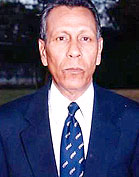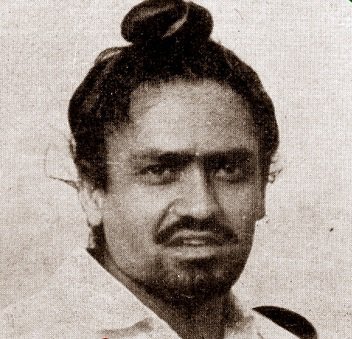




The
farcical nature of Indian football
The 21st football world cup is about to begin. And, as always, India is nowhere in the
picture. This is both a disappointment and an embarrassment to millions of football
lovers like me. But the reasons have never been truthfully answered. We have
hidden ourselves behind screens of misrepresentations and hypocrisy. High time
that Indians know the truth about our football scenario.
Today India is ranked below 100 other
soccer-playing nations of the world. Today even at the Asian level we are among
the bottom-rankers. If nations like Panama, Iceland, Cameroon and Costa Rica
among others can become world-cuppers, why can we not make it?
Ironically, soccer was
introduced to India much earlier than it was established in Brazil by Britain.
The sport was introduced in India by the Britons in the 1850s whereas they laid
the foundation of football in Brazil much later in the 1880s. The game was
played in India by the military men stationed here. The native Indians were
quick to grasp the fundamentals and organized clubs to compete with the British
teams based in India.
But so attuned were we
to being within the ‘comfort zone’ of our country that our players, coaches and
officials had little idea of how football was evolving around the world. The
World Cup had begun in 1930. Soccer at the Olympics had started still earlier,
in 1900. Initially at the Olympics it was an all-European affair, but from 1924
Olympic soccer began to attract nations from around the world. All over the
globe the players had progressed from ‘bare-feet football’ to wearing boots
with studs on.
In India we still
continued to play in bare-feet with anklets on! Actually, even now, some people take great
pride to say that those Indian players had real courage because they played in
bare feet against the boot-studded Brits. Such misplaced bravado cost Indian
soccer very dear in the long run.
In fact when India first
took part in Olympic soccer in 1948, our boys actually played in bare-feet! It
was not allowed by the existing rules. But at the time India had just gained
independence and the Olympics were held at London, so the British authorities,
in an act of over-magnanimity, allowed the Indian players to play without boots
on. On a bone-dry ground, the Indians put up an outstanding display but finally
went down 1-2 against France, after missing 2 penalties!
The next Olympic Games were
held at Helsinki in 1952. Our much-vaunted ‘bare-feet players’ made a mess of
the slushy conditions. They were thrashed by Yugoslavia, 1- 10. Yes, that’s
right, 1-10. Only after that year realization dawned in India that one cannot
play proper soccer without proper boots on.
In between the two
Olympics, in 1950 India received an invitation from Brazil to take part in the
World Cup. India failed to accept the invitation (those days there were no
qualifying rounds) and since then India has never been a part of the World Cup.
Recently an idea is being floated that India could not go to distant South
America because of the high cost of travel. This is not true at all.
At the time, just after
India’s independence, Prime Minister Jawaharlal Nehru, an ardent lover of
sports, was very keen to see India participating in sports tourneys around the
world. Money was made available for various sports meets including hockey,
cricket and other sports. In fact, football too had received government
patronage and private sponsorship to travel to London for the 1948 Olympics.
Money was certainly not
the major issue. The outrageous demand of our football authorities was to be
allowed to play in bare-feet! FIFA was adamant that they would not allow
anybody to twist their rules: either you play with boots on or don’t play at
all.
Even for the 1954 World
Cup at Switzerland an invitation was extended to India. True to form, our
football authorities returned the entry form after the expiry date and consequently
India was not allowed to take part.
In the last five
decades India took part in pre-World Cup tournaments and invariably was
defeated by big margins even by Asian sides. Indian football since the year 1970 has not
been able to make a mark even at the low Asian level.
For the last five
decades, India’s football stature has stagnated at the rock-bottom. But still
we have not bothered to analyze our weaknesses. We have tried to take refuge
under various lame excuses. We have blamed the lack of infrastructure, the lack
of sponsorship money and the lack of opportunities. Are Nigeria, Senegal and Honduras
superior to us in these respects?
Our problem is that we
have remained dishonest to ourselves. We have continuously hoodwinked our
football enthusiasts. Today, India is not even a force in Asian soccer. As it
is, Asian soccer is no big deal in the world of football. For the world cup
among the best 32 nations, three teams from Asia are considered for
qualification just for the sake of universal participation. These Asian teams
are grossly inferior to teams from Europe, South America and Africa which do not qualify for the world cup.
Even among these weak
Asian countries, India has no standing. At present we have come down to
bullying our next-door neighbours in the South Asian Federation (SAF) games.
Quite a come-down it is. In1951 and again in 1962 we were the Asian champions.
We used to beat Japan and South Korea (who are regular world-cuppers now). Even
in 1970 we were the bronze medal winners in the Asian Games. After that what
has Indian football got to show? Just nothing.
In the 1980s the Nehru
Cup was introduced. Top-quality foreign teams came to play. But what did Indian
gain? Now we are having the I-League and the ISL for quite a number of years. How
far has Indian football progressed?
The eternal truth is
that Indian football has to develop from within. No amount of money or overseas
talent transfusion will be of any help. African and South American countries,
including the top football nations Brazil and Argentina, can offer very little
to their young trainee-players by way of facilities and funds. Yet how do they
manage to produce outstanding talents?
Even players from economically advanced nations dance to their samba
tunes. Why does this happen?
Surprisingly no one in
India seems to be bothered. The golden age of Indian soccer was between 1956
and 1962.Instead of eulogizing those truly great players, at the moment the
trend is to heap praise on players who achieved nothing worthwhile during their
heydays, post 1971. This kind of hypocrisy will not help soccer to thrive in
India.
Memories of men like
Neville D’Souza, Peter Thangaraj, Arun Ghosh (my football idol), Jarnail Singh,
Tulsidas Balaram, Simon Sundaraj, Pradip Banerjee , Prosanto Sinha, Yousuf Khan
and Chuni Goswami, among others, are fading away fast. This was the nucleus
that helped India to exhibit fabulous soccer at Melbourne, Rome and Jakarta
between 1956 and 1962.
Neville D’Souza had
scored four goals, including a hat-trick against Australia (now a world-cup
side) at the Melbourne Olympics in 1956. True to Indian tradition, he was
excluded from the 1960 Rome Olympic team! How many of us have heard of Neville
D’Souza, I wonder.
The Indian soccer world
is living in a cocoon of self-hypnosis. Unless we are honest to ourselves and
to football, no improvement will ever take place. First we need to accept the
fact that Indian football has been a total flop even at the low Asian level since
that ‘bronze’ medal in the 1970 Asiad.
Yes, Indian football
brigade can take heart that there are about 80 nations still behind India’s
football rank. What needs to be analyzed is why are we behind Japan and Korea
whom we used to defeat during our golden days between 1956 and 1962? Why are we
behind teams from Cameroon, Nigeria, Ivory Coast, Honduras, Morocco, Columbia
and others who are economically far
behind India and can give little by way of assistance to their own players?
Economically these
countries are so backward that their players seek football-employment abroad. And
because these players are exceptionally brilliant, they get very lucrative jobs
as soccer-professionals. On the contrary our best players are so mediocre that
they are turned back from wherever they go. This sad truth we must learn to
face: we are just not good enough. No point hiding behind excuses, pretexts and
verbiage. Our soccer heroes returned from the last Asian Games after being
thrashed 5-0 and 2-0 in the two matches that they played.
Instead of finding
faults with other sports and games, it is high time that we, the football fans
of India, got the honest answers from the people concerned with Indian
football. Indian football will not progress one step as long we stick to our
hypocritical ways and means. Do we have the courage to accept the truth that
apart from 1956 to 1962 we were never good enough?
The most important
issues are: why are we not good enough? And, what is being done to rectify
matters?